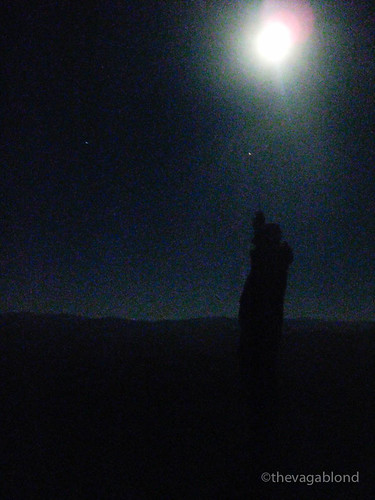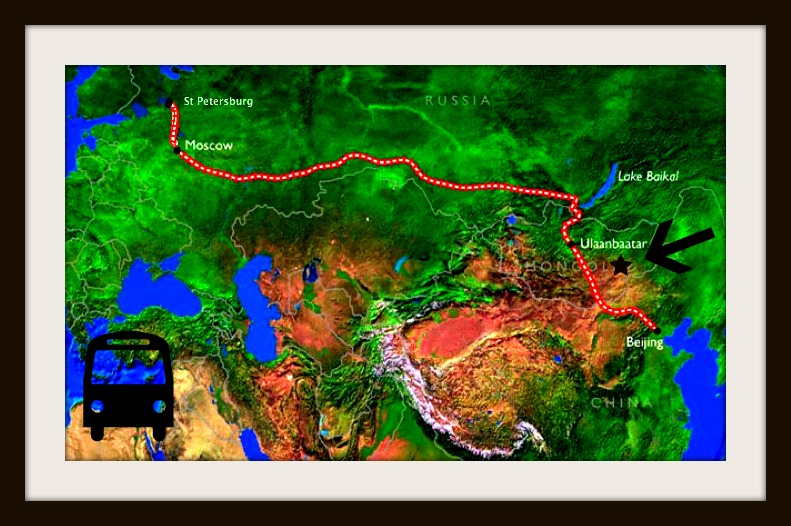(Mongolian Steppes, Somewhere East of Ulaanbaatar)
(These words transcribed for you from the pages of my paper journal that I wrote in with an actual PEN. It accompanied me on our trip into the desert…)
“I’m writing this from the inside of a circular, felt-like portable home somewhere on the steppes of Central Asia. Mongols call them gers. Others call them yurts. Either way, I’m inside one right now. Outside, it’s minus 30 degrees centigrade. It’s warm in here, near the centre of the windowless tent where embers of a coal fire are still burning. We arrived here this evening in a small van with a driver, a random lady, and a couple local nomads we picked up along the way. I don’t know where we are. We’re completely lost. Somewhere between Kazakhstan and China?
The ride here from Ulaanbaatar was relatively uneventful… until our driver decided to drive right off the road. That’s right, he veered off the road completely and took the tiny bare wheels of the rickety van onto terrain I can only liken to the surface of the moon. Lights continued to disappear until the only ones remaining were the wayward headlights of our own tiny vehicle, bobbing and twisting as the van skips and jumps over frozen dirt and cracked earth, the driver following some invisible trail through the night.
We arrived in the Middle of Nowhere in the middle of the darkest night I have ever seen after a two and a half hour drive, two-thirds of which was spent navigating the surface of the moon.
And then we were at the threshold of our yurt.

Inside, three beds. A small table with a thermos of hot water, and teacups, set for three. A hearth in the middle; coal burning. Small stool seats, a tiny chest of drawers, and a sink, with a reserve of water contained in a small metal tank above; a tap for using the water reserve. The sink drain is not connected to pipes – instead, there is a bucket in the cupboard below, which catches water that flows down the drain. Totally perfect.
Freeze, freezing, frozen. We wore all our clothes as we stepped outside to explore our new surroundings – black on black, with a giant white orb lighting the sky. The moon, bright as the sun, cast our shadows across the barren earth. And though our night-time photography isn’t excellent (okay, so it’s downright awful), the moon was bright enough to give us stark silhouettes.

 We made it to the top of what what we thought looked like the highest “hill” in our immediate midst – and on our way down, we were greeted by a young nomad making alluring “eating” gestures – we assumed it was him asking us if we would like to eat with him.. or perhaps shoveling an invisible fork into his mouth was just his way of saying hello… or maybe it was just dark and we made the whole thing up… regardless! We follow him down the hill where an older Mongolian woman with smiling, leather skin opens the 4-foot-high door of another yurt. Heat, flickering lights, and delightful aromas pour out into the desert.
We made it to the top of what what we thought looked like the highest “hill” in our immediate midst – and on our way down, we were greeted by a young nomad making alluring “eating” gestures – we assumed it was him asking us if we would like to eat with him.. or perhaps shoveling an invisible fork into his mouth was just his way of saying hello… or maybe it was just dark and we made the whole thing up… regardless! We follow him down the hill where an older Mongolian woman with smiling, leather skin opens the 4-foot-high door of another yurt. Heat, flickering lights, and delightful aromas pour out into the desert.
“Tether your dogs!”
Apparently, the proper greeting upon approaching a yurt. Lucky for us, the dogs of this family greeted us first (with happy panting and licking and pawing and smiling – Yes, even the Mongolian dogs smile). This is easily the best place on earth to raise a puppy.
We sit down, and the food. My god, the food. It was not what I expected.
First, a pickled cabbage salad.
Next, hot tea.
Followed by a mound of noodles and dried meat heaped with potatoes and thin slices of cooked carrot.
And then, dessert. A shortbread “sandwich” with a mystery filling dusted with powdered sugar. A… wait for it… mazing.
After the meal, we retired to our own yurt.




I went out into the middle of quite barren desert lite only by a full moon on my trip recently, it’s something I’ll never forget.
wow spelling mistakes.
*quiet
*lit
It’s pretty breathtaking isn’t it? Where was the desert you were on?
The imperial Sand dunes in southern California, all you could see was sand in every direction. I climbed onto the the top of one late a night and just stared into the nothing for about an hour. It’s hard to explain how it felt, I just know that I want to go back.
Sounds incredible!! I know the feeling.